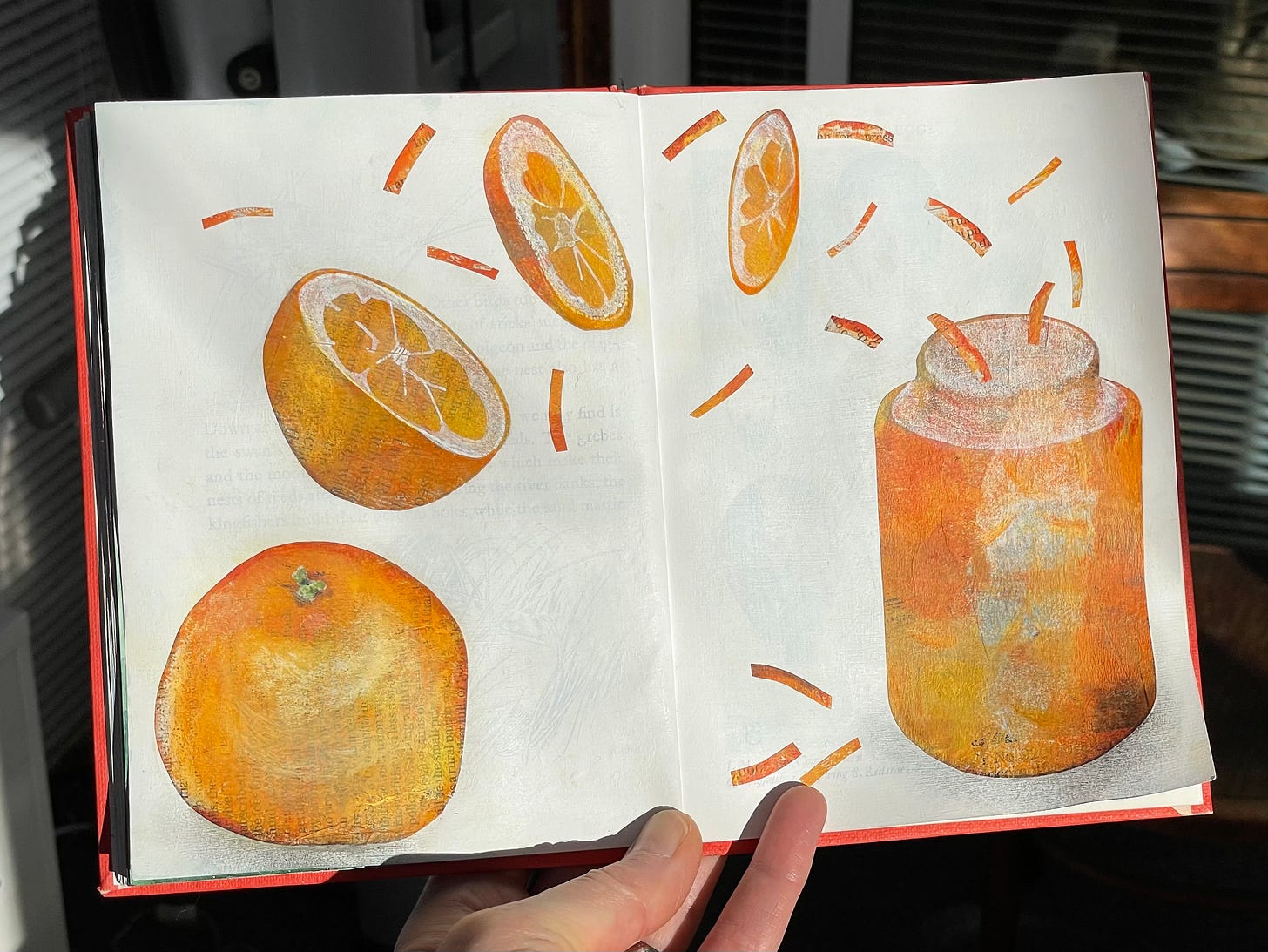
Dear Reader,
The larder of the house in which I grew up is lined with all sorts of homemade preserves. The rows of provisions not only contain jars of recently-made goodies awaiting enjoyment, but they also represent something of a family archive.
Take these treasures on the marmalade shelves:
I found a fascinating story online about the history of jam, and in light of what I’d discovered in my parents’ larder, this line from it really made me laugh:
This sugary condiment dates back much further than you might think.
🤣
Marmalade is such a lovely word. It comes from the Portuguese marmelada, and is the name given to a fruit preserve made from the juice and peel of citrus fruits boiled with sugar and water. The well-known version is made from bitter orange.1
When I first lived in Germany I was asked if I’d like marmalade on my toast. ‘No thanks!’ I said. ‘I’ll have strawberry jam.’
I reached for the jar. ‘Das ist Marmelade!’ my 7-year-old au pair charge told me.
His mother kindly explained that in Germany Marmelade is the name for any kind of fruit preserve, not just the citrus variety. ‘If you want your kind of marmalade’, she told me, ‘you would have to ask for Orangenmarmelade’.
I was already reeling from the previous breakfast’s vocabulary bombshell: that toast is a format of bread, not just a cooking style for it. Bread for toasting is called Toast, or Toastbrot, and to make it into what I would call toast – or what they would call getoastetes Toast – well, you need to toast it.
🤯 #mindblown
🇬🇧 Marmalade on toast
🇩🇪 Orangenmarmelade auf getoastetem Toast (orange marmalade on toasted toast)
An aside on Teutonic tautology
🍊
In a similar vein to the toast and marmalade debate, I find it interesting that in Germany Limonade refers to any kind of fizzy pop. Lemonade is Zitronenlimonade (lemon lemonade); orangeade is Orangenlimonade (orange lemonade).
Seville orange marmalade has always been Dad’s favourite: its golden bitterness becoming a gentler hit to the tastebuds as it matures and darkens. Perhaps that’s why this specimen from 1998 has been kept for so long.

Harvested in Spain from November, Seville oranges are available in shops from late December until early February. Their flavour is tart and intense, and when licking my fingers after helping Mum by shredding the peel ready for the jam kettle earlier this month I rather wished I hadn’t.
The jam kettle is by far the largest pan in the house, and its partner in any preserving project is a wooden spoon the size of an oar, 50cm2 long from spoon tip to the end of its handle, and with a business end 14cm3 long by 9cm4 across.
I remember stirring this enormous pot of foaming sugary liquid as a child, standing on a stool, giant spoon in hand, my face screwed up from both steam and stamina. Reader, I loved it.
Using the blue plastic camping mug she still uses for the job today, Mum would pot the warm marmalade and then seal the jars while I would sometimes be asked to write labels in my bestest handwriting.
I wasn’t all that keen on marmalade, never quite understanding the appeal of bitter, tangy citrus first thing in the morning.
Yet every morning at the breakfast table I wished I could be more like Paddington. The beautiful books about Paddington Bear by Michael Bond and episodes of the classic stop-motion animation narrated by Michael Hordern on children’s television were highlights of my early childhood, yet even Paddington’s fondness for marmalade – he’d even keep a marmalade sandwich under his hat – wasn’t enough to tempt me to spread any onto my toast.
Paddington was nevertheless in good company. I was delighted to learn that the late Queen herself always had a marmalade sandwich on hand in case of emergencies, as this delightful film produced for her platinum jubilee celebrations in 2022 so clearly shows:
The other members of my family have always enjoyed marmalade, and as a result every year in January the house would be suffused with the sharp scent of Seville oranges. These untidy, gnarly-looking fruits – a hybrid between the pomelo and the mandarin – would appear like a bright rash in the new-year windows of local greengrocers.
We all know from the contents of the fruit bowl that the downside of eating dessert oranges is the risk of coming across a few pips – unless of course you splash out on a seedless variety – but whoever had been responsible for the hybridisation of the Seville orange must have been having a laugh. 🙄
Over the years I found I began to enjoy marmalade, but mostly kept my distance from those jars of the bitter Seville orange variety. Lime marmalade became a favourite, perhaps because it reminds me of Rose’s lime cordial – that radioactive-green nectar I had first come across in the college bar, and not in the context of lager and lime.
On one of my visits home from university in the 1990s I had come across a surprisingly wide expanse of jars labelled ‘Mexican marmalade’ on a heaving shelf in the larder.
‘Wow, what’s all that?’ I asked Mum.
‘You’d better ask Dad’, came the reply, with a hard stare.
Keen to explore his temporary surroundings whenever he was away for work, my longhaul pilot dad had outdone himself procuring produce on a trip to Mexico City. On his way back to his hotel he’d seen a gorgeous pile of limes at a street market, and had bought enough to fill – FILL! – his rucksack. I’m not sure of the intercontinental import/export rules on fruit nowadays, but at home marmalade recipes are still measured in ‘pounds and rucksacks’. I gather that the production line resulting from Dad’s arrival home with all of those limes had been in full swing for days.
On my arrival at my parents’ home a couple of weeks ago I found Mum almost literally elbow-deep in her work making her first batch of Seville orange marmalade for the year, and I rolled up my sleeves to get stuck in. Once I’d finished picking out the last of the pips from the shells of the halved and juiced oranges I halved the peels again and sliced each piece straight across into tiny orange eyebrows.
Next I was set to work with the wooden oar to slowly stir the contents of the jam kettle over a gentle heat until the scratchiness of the dissolving sugar was gone. Once no grittiness remained I slid the pan carefully to the hotter side of the hob and watched it bubble and foam like citrus-scented magma, taking care not to lean my head over the top of the pan in case of splashes.
In our family it seems it’s not just fruit but also memories that are well preserved, with specimens of both going back to – and beyond – 1998. And Reader, Paddington and the Queen were both on to something. My own tastebuds have matured, and as far as I’m concerned there’s no better treat for breakfast than a slice of toasted 🇩🇪 😉 toast and a thick layer of homemade Seville orange marmalade.
Love,
Rebecca

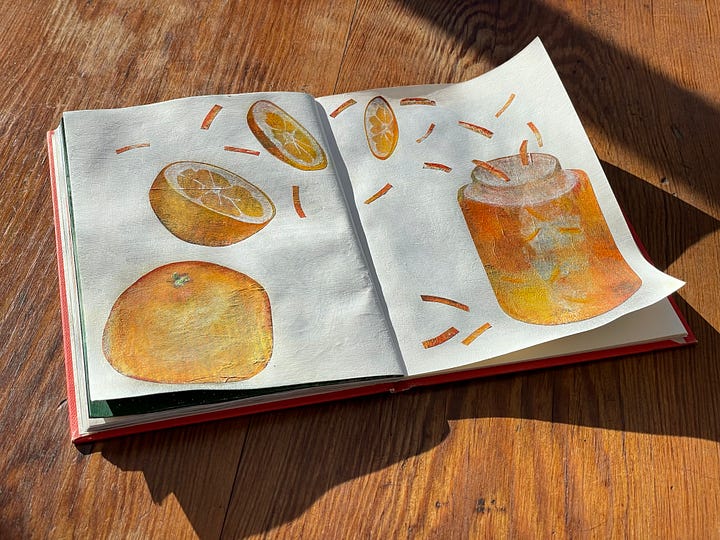
Artist’s notes
For this spread in my altered book art journal I wanted to have fun with collage elements on a plain background, and chose newspaper to paint on splodges of acrylic paint in orange, white and three different yellows using a brayer.


Once this was dry I sought out interesting patches of colour and drew rustic shapes to represent a knobbly Seville orange, orange slices and a jar of marmalade using a 4B watersoluble graphite pencil.
I’d already covered the pages of my altered book art journal with a layer of white acrylic paint to make the printed text and pictures less dominant, and then a layer of white gesso to make the paper both robust and waterproof.
I played around with my composition with the newspaper elements on my spread, and once I was happy with them I stuck them down with matte gel medium and gently pressed and wiped with a damp rag to secure them to the background without air bubbles, and to remove the watersoluble graphite.
After leaving the book for a couple of hours to dry I covered the newspaper elements with more matte gel medium, essentially ‘varnishing’ them to give me a waterproof layer to work on top of.
I added detail to my collage elements using more acrylic paint, watersoluble wax crayons, a white paint pen and coloured pencils, adding those eyebrows of peel as a finishing touch.


📚 Reading 📚
📚 Along with marmalade, tea is a fixture on my breakfast menu, and I have written about my love for this delightful drink on a number of occasions. Imagine my delight (and horror!) when I came across this fabulous essay by
of , which is not only a commentary on my own tea-related correspondence with Terry Freedman but also an exploration of adding salt. Yup, salt. 😲Enjoy!
📚 Here’s a lovely post by someone who expresses joy in her art! The world portrayed by
of is a lovely place to be: check out any of her posts to see what I mean!📚 Regular readers of ‘Dear Reader, I’m Lost' will be no strangers to my ongoing light-hearted correspondence with fellow Brit
of Eclecticism: Reflections on literature and life. It’s his turn to reply to me next Wednesday, and I really can’t wait!If you’ve enjoyed reading this post, the latest in a monthly series exploring some of my memories in words and pictures, please let me know by clicking the heart. Thank you! You’ll find all the posts in this ‘Art & Treasures’ series here.
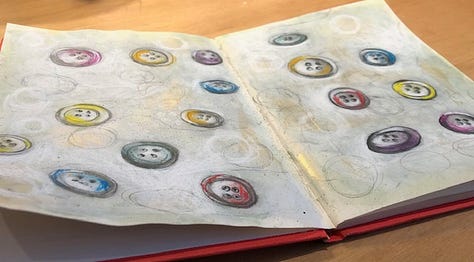


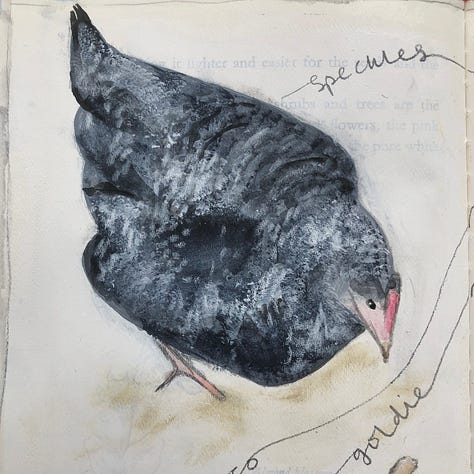

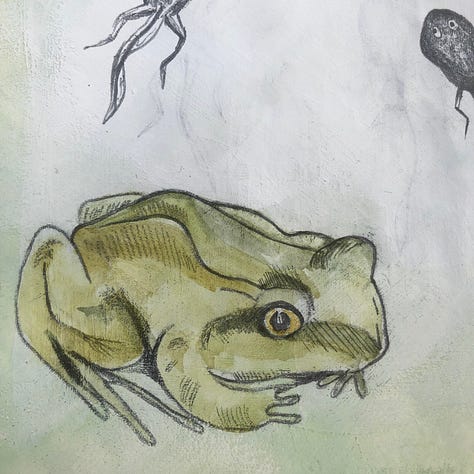
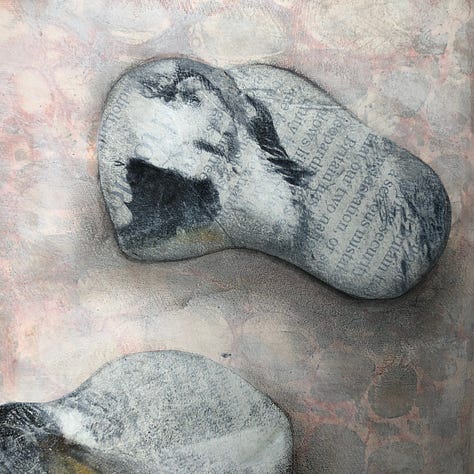


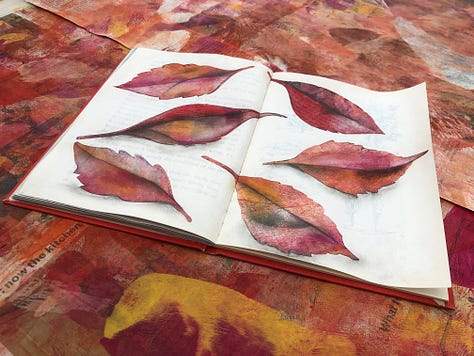


Thank you for reading! If you enjoy ‘Dear Reader, I’m lost’, please share and subscribe for free.
Over 19.5 inches
5.5 inches
3.5 inches





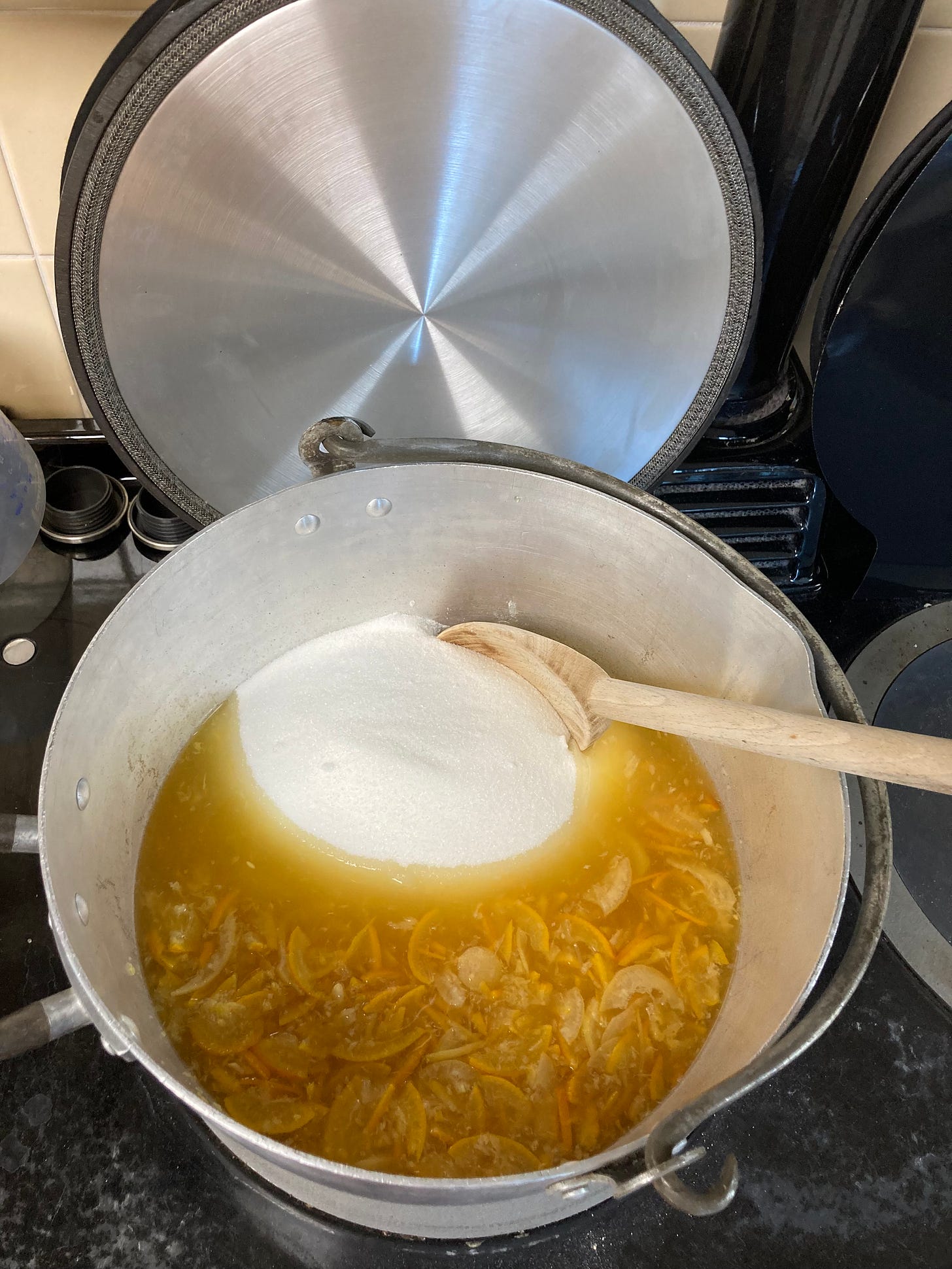

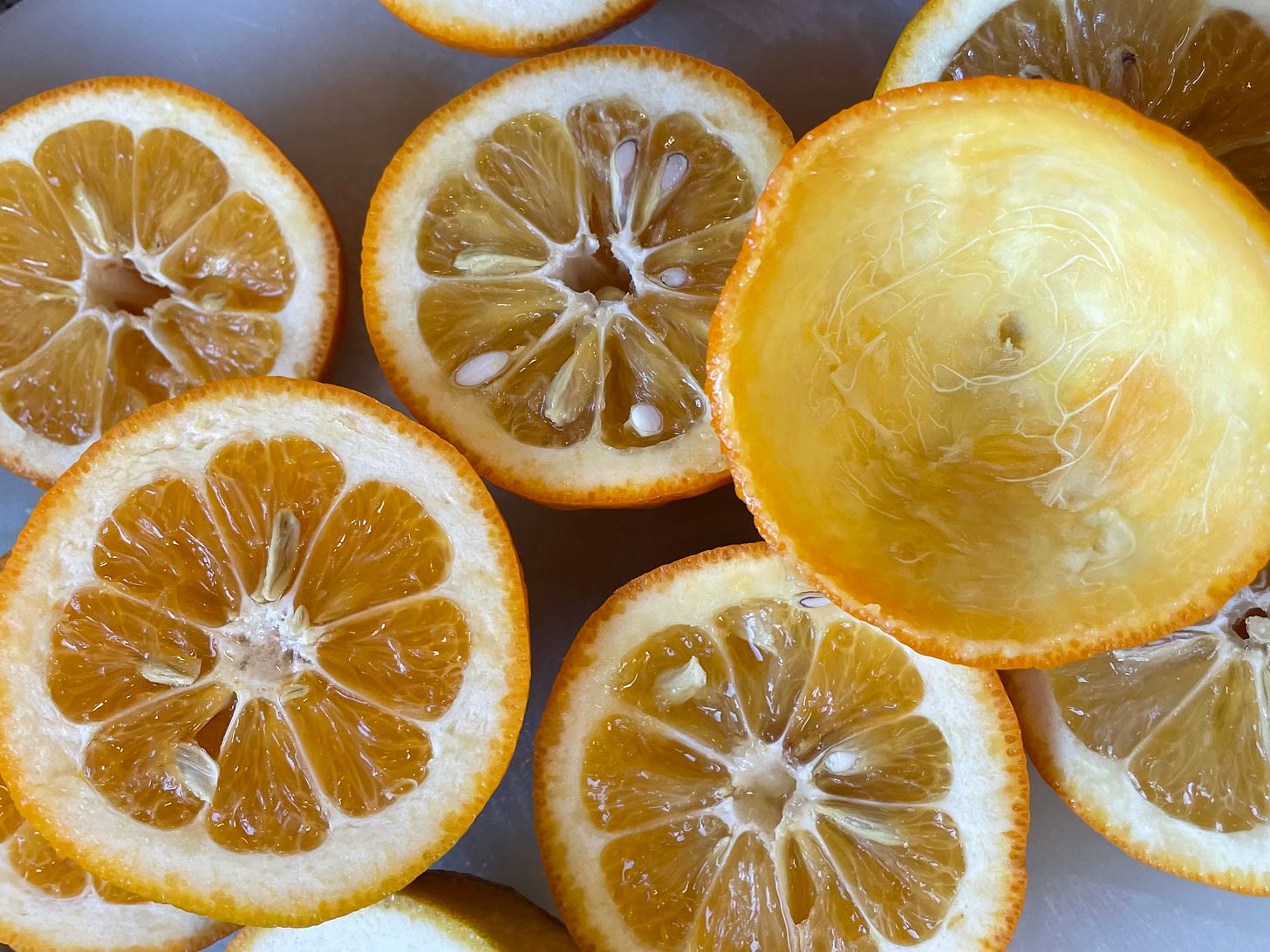
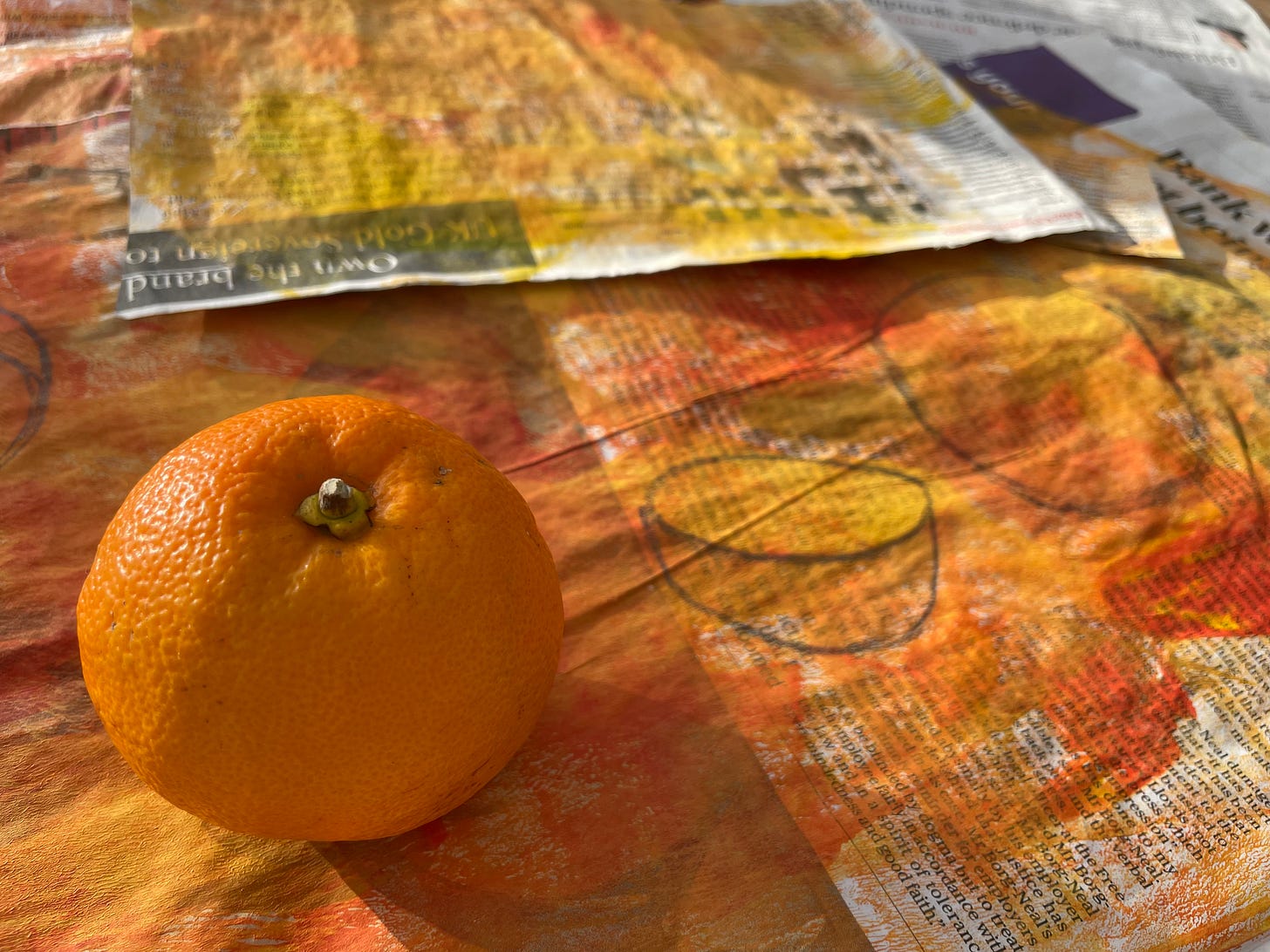
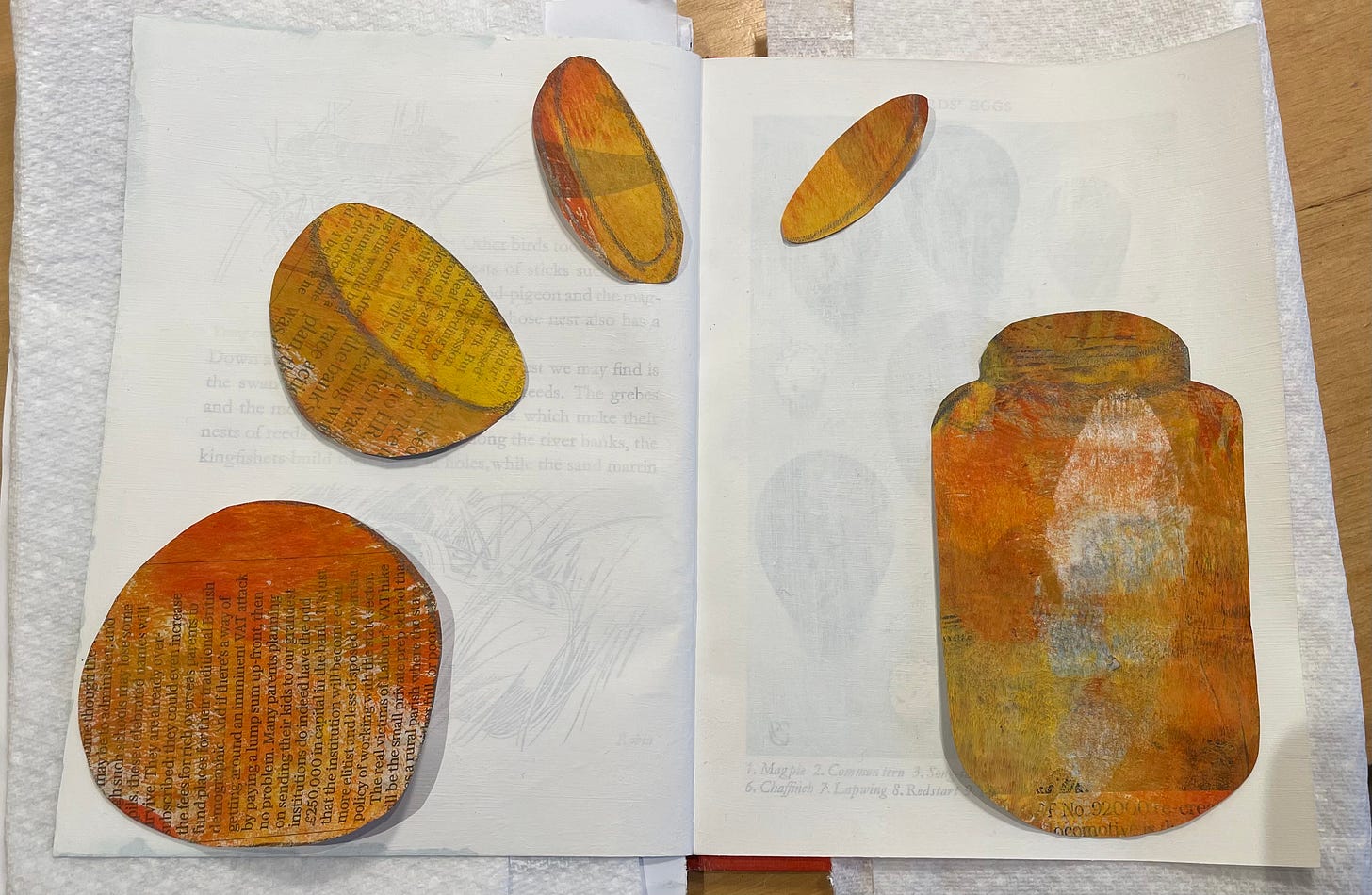
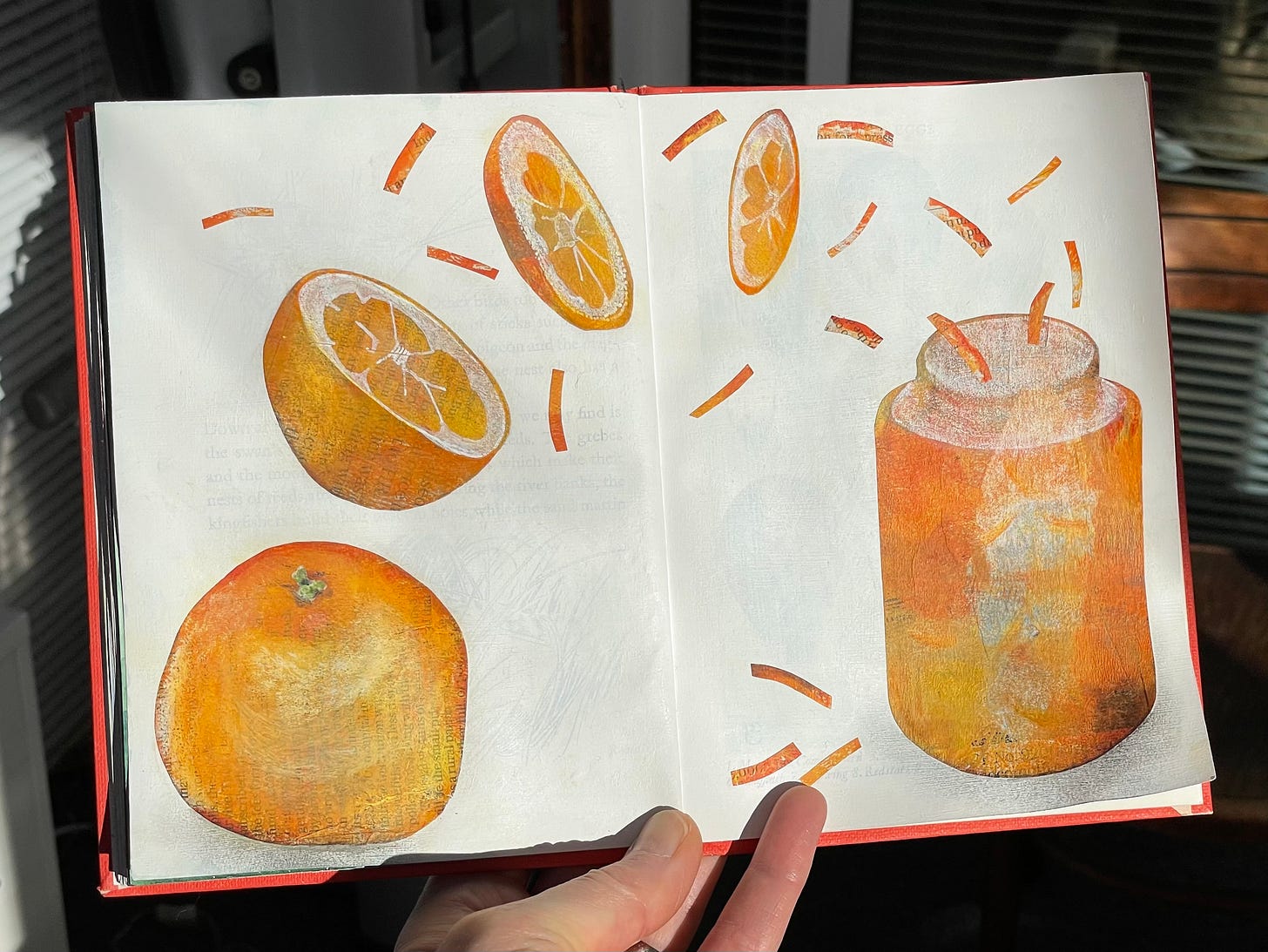



I too am on team marmalade! My family pantry growing up was like an archeological dig of what went down in years gone by as it never seemed to all get eaten in one year!
Thank you for sharing your gorgeous artwork Rebecca, it nourishes my soul. I love the oranges, it’s gorgeous!!
I enjoyed reading this! I like marmalade too.
Those paddington bear videos are so endearing. 💕